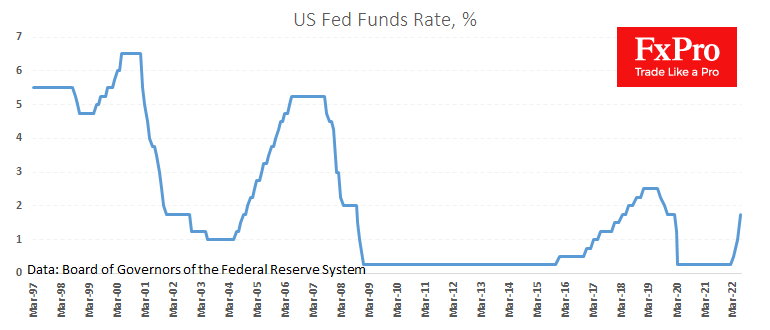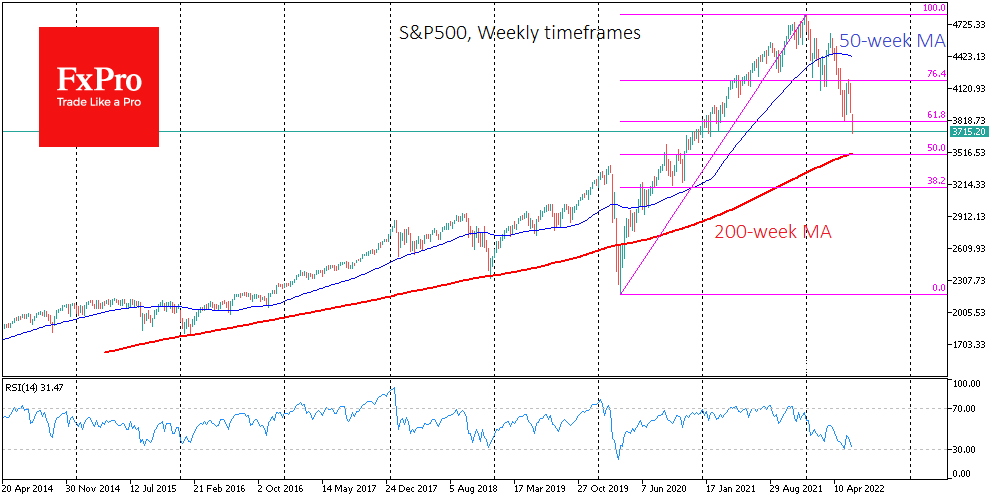S&P500 could fall to 3,500 before Fed softens its approach
June 16, 2022 @ 13:31 +03:00
The Fed raised the rate by 75 points, something it has not done in 28 years. Such a move had already been priced in. In fact, on the eve of the announcement, the markets had even factored a small probability of a 100-point move.
The Fed did not go against the markets but did not add fuel to the expectations, creating a “sell the facts” reaction. However, there are considerable doubts about the sustainability of yesterday’s rebound in equities and the Dollar’s retreat.

In trading in Europe, the Dollar largely regained its losses after the FOMC, and the equity market erased the rebound. Today’s market reaction looks like a prologue to further downward impulse in the coming days, justified by tighter financial conditions from the world’s biggest central banks and worsening macroeconomic forecasts.
Thus, the Fed raised its year-end forecast for the unemployment rate to 3.7%, ruling out a further decline from current levels. GDP growth for 2022 was revised from 2.8% to 1.7%, and such a rate is expected for 2023.
Among the potentially positive things for the markets is the assurance that yesterday’s move was exceptional and that FOMC intends to hike by another 50-points at the end of the July meeting.

It is also essential for markets to understand where the Fed intends to stand. Average forecasts from FOMC members suggest a level of 3.75%, which is 200 points above the current rate and 150 points below the peak that the futures market set up for the day before.
Despite the reassurances of Powell, the markets can hardly go through a period of 50-point hikes at a time with quantitative easing without losses, which is tightening financial conditions on both sides.
The rally in the Dollar and the decline in equity prices in response to such policies could bring the final point of fiscal tightening closer. Still, in the coming days or weeks, markets have a high chance of adjusting to the new reality.

The S&P500 futures are down to 3700, taking the market another couple of steps closer to 3500, a significant long-term trendline. Unless markets go into free-fall mode, near 3500, where the 200-week moving average passes, markets could find support, as they did in 2016 and 2018. A free-fall regime for the S&P500 below this line, in our view, could force the Fed to urgently soften its approach.
The FxPro Analyst Team







